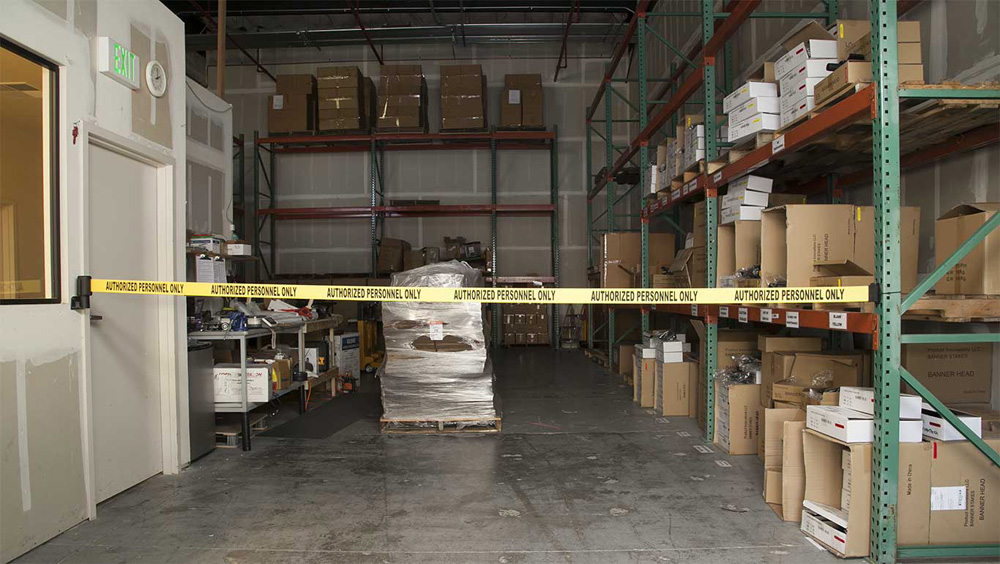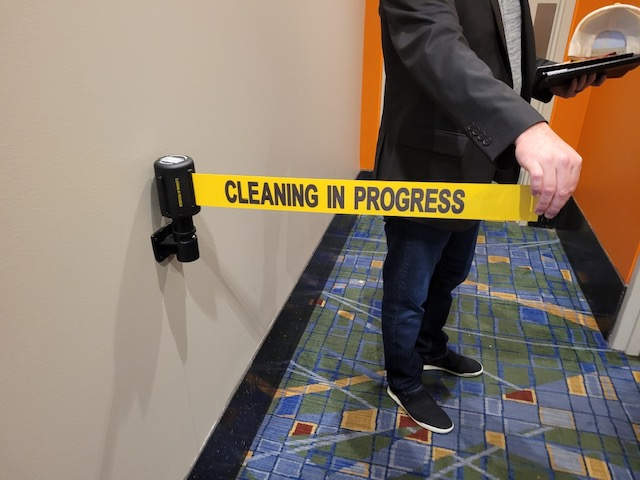You hear it all the time… “safety is our number one priority!”
In the age of OSHA and government enforced safety standards, workplace safety has become deeply ingrained in most organizations. Safety is often listed as a core value in company mission statements and routine safety training has become the norm. Increased attention to safe working conditions is a good thing; it keeps your workforce healthy, safe, and engaged – all key to running a successful business.
However, sometimes with all the regulations and rules surrounding safety, it’s easy for work safety to become routine and mindless. In an environment of rules without clear purpose, some longstanding safety myths and misconceptions may go unchecked. Unfortunately, any holes in your organization’s safety plan can have serious consequences on your business, from hefty fines, to lawsuits and serious injuries. Nobody wants that!
So let’s examine and debunk some of the most widely held safety myths and misconceptions before they can have a significant impact on your business:
Myth 1: Safety is just common sense
Do workplace injuries happen because workers aren't paying attention? Is safety simple "common sense"? - Not quite.
One of the biggest safety myths is that employees only get hurt when they make a common sense mistake... but there are actually many factors to safety. For example, if you've never operated a boom lift before and your boss tells you to hop on board and use one without any training or guidance, how successful do you think you'd be? You wouldn't know how to properly operate the machine, or be aware of any of the lift's safety features, and you wouldn't know what to do in the case of a serious emergency. In other words, without the proper instruction, common sense won't get you very far.
Another factor to safety is that injuries happen to everyone - no one is above it. Have you ever been working at home on a mundane task – maybe doing the dishes or working in the garage – and been hurt? It can happen in the blink of an eye. Maybe you cut yourself on a butterknife while carefully washing dishes or accidentally wipe your eye after cutting onions, or slip and fall in the driveway. The point is we’ve all been injured; it happens and it’s not about common sense, it’s about risk.
Everyone has some risk. Some of us have more risk than others because we’re in dangerous occupations. When you’re using dangerous equipment for complicated tasks, safety isn’t common sense. Workplace safety requires intensive training, guidelines, expectations, and enforcement.
Myth 2: Investing in workplace safety is too expensive and not profitable
Some business owners falsely believe that safety programs do not provide a return on investment. In reality the opposite is actually true. Unsafe work environments tend to cost MORE to operate.
Companies that invest in workplace safety - from proper safety equipment to training programs and coaching - can help reduce unnecessary costs such as injury compensation claims, damaged product, OSHA fines, administrative expenses, and lawsuits.
Here are just some of the indirect costs of an unsafe workplace:
- Poor employee attendance
- Low employee performance
- High staff turnover
- Accident investigations
- Loss of business reputation
- Loss of contracts/clients
- Damage to property
Investing money on a safety program is a worthwhile and pragmatic endeavor. By helping your operations cut back on preventable accidents, you'll help your company save a lot of money, time, and valuable resources in the long run.
Myth 3: There are no work related injuries in an office setting
This is completely false! Every workplace – even an office – is at risk for accidents, injuries, and illnesses. In fact, sedentary work environments may be more vulnerable due to repetitious employee activity, often resulting in longterm health issues like back strain or carpal tunnel syndrome.
According to medical experts, people who sit for long periods have a higher risk of experiencing elevated blood pressure, high blood sugar, obesity, heart disease, and even cancer. And health issues are not the only potential danger in an office setting. Just because you work in an office doesn’t mean you are safe. You may still involved in an accident if you do not take proper precautions.
Injuries and diseases can result in higher health insurance claims and missed workdays. Identifying safety hazards in your workplace helps keep your employees safe and healthy.
Myth 4: We follow OSHA standards, so we're completely safe
OSHA regulations set the minimum requirements for workplace safety. OSHA's standards should always be followed for compliance and basic protection - BUT this does not mean that you are safe from accidents!
Instead, a safety program should be built on your facility's specific needs and operations. While basic OSHA standards are necessary and important, but no one knows your facility the way you do! OSHA can't anticipate accidents that are specific to your worksite.
Even if your facility has an excellent OSHA safety record you cannot be confident that this means an accident will never happen. In fact, many workplace injuries and fatalities are first-time offenses. It is likely the company had a good safety record before the unfortunate incident.
Workplaces are constantly evolving – new employees get hired, new roles are created, and new equipment is introduced. And along with these are new hazards and risks as well.
This is why regular risk assessment is important. Review current procedures and make sure that your safety programs are still relevant and effective.
Myth 5: Safety measures are just about reducing workers' comp claims
The right workplace safety program does far more than reduce workers comp claims. At its core, safety is about preventing injuries and fatalities, not for the sake of saving money, but because you care about your workforce. When a company commits to preventing accidents, it improves the quality of life of its workers. This creates a ripple effect that carries into the personal lives of employees and makes your business one that people genuinely want to work for.
Safety comes from the top down. Management should clearly communicate safety expectations and involve employees in developing and implementing a safety program. The leader's attitude toward safety set the tone - it will be noticed by employees. For a safety program to be successful, it's important for management to reflect the importance of safety in daily operations - from a place of care and concern, not money. Saving money is simply a natural consequence of an effective safety program.
Myth 6: My equipment has enough safeguards; it can't hurt me
Equipment may appear safe, and usually, it is. It’s probably marked with precautions to take while operating it and comes equipped with safeguards galore, but there’s so much more to safe operations.
Remind your machine operators that they aren’t invincible. In can help to share safety stories as examples. Keep employees polished up on the latest training. Anyone using equipment in the workplace should know how to safely operate the equipment, including lock out/tag out procedures, and simple maintenance.
Myth 7: Reporting minor injuries isn't worth it
This myth is a very dangerous attitude to have. Once one person “forgets” to report a cut they got on their hand, more employees tend to catch on and can shove the priority to the wayside. Minor injuries can have major impacts later, such as a small cut that later gets infected.
It can help to remind workers that they won’t be apprehended for reporting even the smallest incidents.
Reporting minor injuries can help pinpoint the underlying causes of repeated accidents. Why are accidents occurring? Is it the time of day? Does your equipment need maintenance? Could the weather be a factor? Communicate to employees that reporting small injuries is useful to improving the safety program for the entire company.
Let's correct misunderstandings and give more attention to workplace safety.
Does your business succumb to any of these common misconceptions? It's never too late to begin improving your safety program! Start where you are. Seek ways to improve your current plan and build from there. Retractable belt barriers offer a great starting point. Highly visible safety and hazard communication barriers have a proven track record of helping prevent accidents. Barriers help alert workers and site visitors when there is a potential danger in the area.
Interesting in learning more? We can assist you in finding safety products to create a safer workplace and meet compliance requirements.
Contact us today so we can start discussing your safety program.
Need help improving your worksite's safety program? We're here to help!
Schedule a site walk with us, and we'll build a safety plan tailored to your exact operations and layout.


